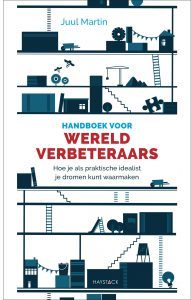Marcel van Marrewijk's Blog, page 68
September 6, 2018
Deze 5 tips van de Plastic Soup Surfer houden jouw dromen boven water!
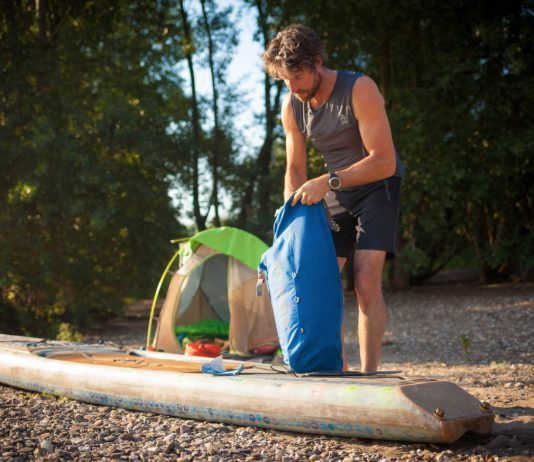
Merijn Tinga a.k.a. de Plastic Soup Surfer, ziet er met zijn zongebruinde huid, bruine krullen en nonchalante houding uit zoals je van een surfer mag verwachten. Hij zet zich in voor een wereld zonder plastic zwerfafval. Vorig jaar peddelde hij 1.200 kilometer van de oorsprong van de Rijn naar de Noordzee om CEO’s van bedrijven te confronteren met het zwerfafval dat hij onderweg tegenkwam. Hij wil hen ertoe aanzetten hier meer verantwoordelijkheid voor te nemen. In maart werd in de Tweede Kamer besloten dat er vanaf 2021 statiegeld komt op kleine plastic flesjes nadat Merijn eerder een motie hiertoe indiende: een mooie overwinning!
Merijn Tinga was vroeger biologieleraar! Na een paar jaar voor de klas nam hij ontslag om naar Marokko te fietsen: een kantelpunt naar een leven met meer betekenis. Tijd om deze voormalige leraar en wereldverbeteraar te vragen naar zijn tips voor (toekomstige) sociaal ondernemers!

1. “Ga voor wat je echt belangrijk vindt”
Hoewel anderen hem steeds meer als zodanig bestempelen, vertelt Merijn dat het nooit zijn intentie was om sociaal ondernemer te worden. Hij vertelt hoe hij vóór Marokko vooral negatieve keuzes maakte, zoals zoveel mensen doen. “Je kent het wel, toen ik klaar was op de middelbare school ging ik studeren omdat ik makkelijk leerde en omdat dit erbij hoorde. Mijn studiekeuze was geen bewuste keuze, ik ging in Leiden studeren omdat dit dicht bij het strand was en ik van surfen hield.” Merijn vertelt hoe gemakkelijk het is om zo van de ene negatieve keuze in de andere te rollen. Hij eindigde in het onderwijs, maar uiteindelijk koos hij ervoor het roer helemaal om te gooien en eindelijk iets te gaan doen wat hij echt wilde. “Dat was de eerste positieve keuze die ik maakte!”
“Doen wat ik écht wilde, was de eerste positieve keuze die ik maakte.”
2. “Durf risico te nemen en zekerheden los te laten”
“Het vergt moed om zekerheden op te geven en je eigen pad te kiezen maar als ondernemer moet je eigenwijs zijn en risico durven nemen”, vindt Merijn. Zijn ouders stonden niet te trappelen om zijn keuzes. “Het heeft best een tijd geduurd voor ik weer het gevoel had dat ze trots op me waren en begrepen waar ik mee bezig was. Het kan lastig zijn het roer om te gooien en tegen de stroom in te gaan, maar als je dat niet durft moet je wat anders gaan doen.”
“Het vergt moed om zekerheden op te geven en je eigen pad te kiezen maar als ondernemer moet je eigenwijs zijn en risico durven nemen.”
Of hij ooit wel eens in de problemen kwam door het nemen van risico’s? “Je moet een beetje vertrouwen hebben, maar in de expedities die ik doe gaat er natuurlijk weleens wat fout. Je zet jezelf voor het blok en als je eenmaal onderweg bent móet je verder.” Merijn vertelt dat de eerste surftocht die hij maakte waarschijnlijk het gevaarlijkst was. “Ik moest langs een van de grootste zeehavens ter wereld met een door waterschade defect back-up systeem en bovendien was het board veel te zwaar. We zouden de verkeersdiensten inlichten, maar de eerste mensen die we spraken gingen volledig uit hun dak toen ze hoorden dat ik op een surfboard langs kwam waardoor we de rest niet meer durfden in te lichten. We besloten volledig op de tracker die we hadden te vertrouwen. De situatie zit tegen maar het moment waar je maanden naartoe hebt gewerkt is daar: wat doe je dan?”
3. “Vertel je verhaal op een manier die aanspreekt”
Merijn: “Eén van de dingen die de Plastic Soup Surfer succesvol maakt is de manier waarop we een verhaal vertellen: surfen maakt statiegeld sexy. Als je wilt dat mensen naar je luisteren moet je het verhaal vertellen op een manier die aanspreekt. Mensen vinden de Plastic Soup Surfer sympathiek. Het spreekt tot de verbeelding en heeft iets heroïsch. Bovendien is het belangrijk je te realiseren dat emotie op elk niveau een rol speelt in besluitvorming. Je merkt gelijk dat de energie verandert als ik mijn verhaal vertel.”
4. “Durf te investeren en hou vol”
Volgens Merijn moet je een lange adem hebben en trouw blijven aan jezelf als je succesvol wilt worden. In het begin zal je vooral veel moeten investeren en het gaat niet vanzelf. “Ik ben sinds 2014 bezig met de Plastic Soup Surfer en het begint nu zijn vruchten af te werpen en langzaam financieel wat op te leveren. Dit heeft wel een tijd geduurd…” Oorspronkelijk had Merijn geen business model omdat de Plastic Soup Surfer uit idealisme en zijn passie voor surfen geboren is. Daarom heeft hij er moeite mee zichzelf als sociaal ondernemer te zien. Hij vertelt: “Tot mijn tocht over de Rijn kostten mijn campagnes vaak geld of waren deze kostendekkend. Ik hield hier zelf niets aan over. Ik heb eigenlijk altijd een bijbaan gehad om dat op te vangen”. Inmiddels is hij wel bewuster bezig met zijn verdienmodel, ook om op lange termijn impact te kunnen blijven maken. Hij maakt op een slimme manier gebruik van crowdfunding en doordat zijn verhaal inmiddels bekend is doen er zich ook steeds meer kansen voor.

Op de vraag of hij gerecyclede surfboards op de markt gaat brengen antwoord hij resoluut: “Nee, ik wil geen extra product op de markt brengen”. Hij geeft aan al door verschillende bedrijven hiervoor benaderd te zijn, maar dat hij mensen niet tot consumptie wil aanzetten. Wat dat betreft onderscheidt dat hem van andere sociale ondernemingen zoals bijvoorbeeld Dopper die juist met hun product aandacht vragen voor een maatschappelijk probleem.
5. “Je moet weten waar de golf gaat breken en daar moet je surfen”
Merijn legt uit dat het als sociaal ondernemer niet alleen belangrijk is kansen te herkennen, maar dat je ook goed moet kijken op welk gebied van een groter sociaal of maatschappelijk probleem jij echt een verschil kunt maken. Zo kwam hij eropuit zich in te zetten voor statiegeld op kleine flesjes. “In veel landen is dit systeem al operationeel en zien we dat het werkt. In Nederland werd deze ontwikkeling steeds tegengehouden” vertelt Merijn. Mensen vragen hem weleens waarom hij zich niet op het plastic probleem in bijvoorbeeld Indonesië richt omdat daar enorm veel vervuiling is. Hij geeft aan (in ieder geval voorlopig) dicht bij huis te willen blijven omdat het probleem hier ook erg relevant is en hij het juist in een geïndustrialiseerd land als Nederland belangrijk vindt dit onderwerp op de agenda te houden.
“In veel landen is statiegeld op kleine plastic flesjes al operationeel en we zien dat het werkt. In Nederland werd deze ontwikkeling steeds tegengehouden.”
Hij vertelt verder dat het belangrijk is jezelf steeds te blijven ontwikkelen en om gaandeweg je strategie aan te passen. “In eerste instantie hadden wij bijvoorbeeld geen call to action, om mensen aan te sporen tot positief gedrag, maar wilden we vooral het probleem illustreren. De volgende stap was om te kijken hoe we echt iets konden veranderen. Uiteraard is dit natuurlijk niet het enige wat er moet gebeuren in de strijd tegen plastic zwerfafval, maar je moet ergens beginnen en dat kun je het beste doen op een voor jou passende manier en waar jij denkt verschil te kunnen maken.”
Foto’s (c) Eelke Dekker
Meer artikelen lezen over sociaal ondernemerschap? Kijk verder op so/creatie.
so/creatie is uitgever van so/magazine, hét online magazine over sociaal ondernemen in Nederland. Door gesprekken over het hoe en waarom van het werk van sociaal ondernemers creëren we samen meerwaarde voor deze groeiende beweging.
so/creatie levert een bijdrage aan de groei van de sector sociaal ondernemerschap in Nederland. Onder andere door het adviseren van (startende) sociaal ondernemers over en het helpen bij de uitvoering van hun communicatie, geven van workshops en lezingen om kennisoverdracht te bevorderen en het organiseren van meetups.
The post Deze 5 tips van de Plastic Soup Surfer houden jouw dromen boven water! appeared first on Seats2meet.
September 5, 2018
Seats2meet Fans Across America
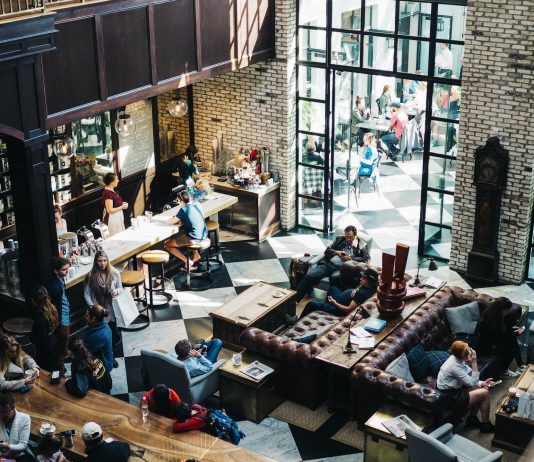
In my last blog post, I decided to take a deeper look into the motivations of coworkers and what users of shared spaces are actually looking for. For example, in a global survey conducted by Deskmag, the most important aspects of coworking spaces according to its users are interaction with other people, flexible working hours, and an environment that encourages serendipitous discoveries.
One of the best parts about being involved in the Seats2meet community is being able to connect with other coworkers around the globe. Even more so, becoming connected to other S2M fans who truly believe in what S2M has to offer and that value can be created outside of traditional monetary means. As the topic of my research is focusing on the American market and how S2M can penetrate it, I have had the opportunity to get in touch with and interview several individuals in America. Each conversation has been unique and informative. Yet, one thing that remains consistent is the passion they each have for connecting people both in and outside their network, to help them grow professionally and personally.
With that said, this blog post highlights 3 individuals who are S2M fans currently living in America. I hope that by sharing their stories, you can see just how far and wide the Seats2meet net can be cast!
Meet ET Stone
 ET Stone is a self-identified digital nomad. He is the owner and founder of ETS Entertainment, an independent multi-media & marketing company catered to independent artists and companies across the globe. The goal of ETS Entertainment is to connect (but not limited to) entrepreneurs in the music industry to share their talent using social capital.
ET Stone is a self-identified digital nomad. He is the owner and founder of ETS Entertainment, an independent multi-media & marketing company catered to independent artists and companies across the globe. The goal of ETS Entertainment is to connect (but not limited to) entrepreneurs in the music industry to share their talent using social capital.
Stone launched his first studio in Hilversum, NL known as Stealth Studios in 2004. However, since then, the location has closed. Stone spends his time living between The Netherlands, where he still has his company ETS Entertainment Network, and his hometown of Anderson, South Carolina in the U.S.A.
Stone is in the process of re-launching Stealth Studios in South Carolina which he hopes will open in 2019. The new and improved Stealth Studios will be taking on a larger role in the community. Not only will it be a place that artists and creatives can utilize to produce, work and collaborate, but there will also be an institute on the property where kids ranging from ages of 5-18 can attend the school for free. Stone envisions creating a space where kids can learn what they actually want to learn. For example, they can have the opportunity to work with the cameras on a real project that is happening in the studios. Furthermore, they will gain the necessary experience and knowledge to produce music, films, and documentaries. Stone hopes to launch a third studio in the Philippines
Stone sees the Serendipity Machine and Seats2meet as the perfect tools to help individuals connect and grow! Most importantly, the Passport provides connectivity on a global scale which is of particular interest to Stone as his community is becoming increasingly more global. look forward to seeing what Stone accomplishes in the near future. I have a feeling it will be pretty amazing.
Meet Audrey Betcher
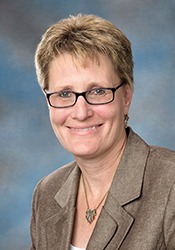 Audrey Betcher is the Director of the Rochester Public Library located in Rochester, Minnesota. Betcher is a longtime fan of Seats2meet and sees great potential in incorporating the Serendipity Machine into the library system. RPL (Rochester Public Library) takes active steps to be a key member in the community’s development. For example, the library hosts programs such as Ready to Lead, where they partner with other organizations to support and engage historically under-represented people who wish to serve on boards and committees.
Audrey Betcher is the Director of the Rochester Public Library located in Rochester, Minnesota. Betcher is a longtime fan of Seats2meet and sees great potential in incorporating the Serendipity Machine into the library system. RPL (Rochester Public Library) takes active steps to be a key member in the community’s development. For example, the library hosts programs such as Ready to Lead, where they partner with other organizations to support and engage historically under-represented people who wish to serve on boards and committees.
Betcher believes the Serendipity Machine is an important tool to foster connections and community development a in a continuously growing area. Rochester is a city of about 110,000 residents and home of the Mayo Clinic, a world renowned medical center. As such, Rochester draws individuals from all over the world. Therefore, by introducing a solution like the Serendipity Machine into community spaces, such as the library, community members could be instantly connected to one another based on relevancy and interests. Betcher sees the Serendipity Machine as a way to connect people on a lot of different levels- both socially and professionally. For example, if a Rochester resident has a deep interest in boats and wants to find someone to share the passion with, the Serendipity Machine can match you to someone with related interests. In an ever-growing community with a diverse population, residents have a desire to connect to one another. As such, the Serendipity Machine can most certainly help in that department! That is what it is made to do.
Meet Betsy Bonnema
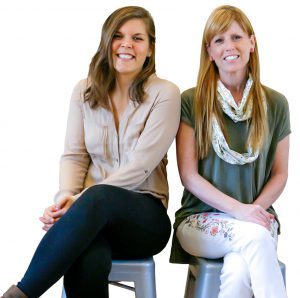 Betsy Bonnema is the founder of WORKUP and REDstar. WORKUP is a coworking space that was founded and started by REDstar, a creative agency located in Minnesota. WORKUP can be found in a renovated cottage alongside Willmar Lake and is home to REDstar in addition to freelancers, remote workers, and small businesses in the community. Next to this, WORKUP hosts a variety of events, typically once to twice a week, ranging from book clubs to educational workshops.
Betsy Bonnema is the founder of WORKUP and REDstar. WORKUP is a coworking space that was founded and started by REDstar, a creative agency located in Minnesota. WORKUP can be found in a renovated cottage alongside Willmar Lake and is home to REDstar in addition to freelancers, remote workers, and small businesses in the community. Next to this, WORKUP hosts a variety of events, typically once to twice a week, ranging from book clubs to educational workshops.
WORKUP takes a collaborative approach in all aspects of its business – making sure to let the coworkers and community members know that their voice is heard. Community Curator, Jayme Sczublewski, helps connect members to one another to foster a deeper sense of community within the space. Furthermore, she tries to encourage collaboration amongst users in the space by modeling it; members are encouraged to bring on sponsors for events and share any ideas they may have! Whether you are looking to attend an event or to utilize the space just for the day, the next time you are near Willmar, MN I encourage you stop by WORKUP and say hello!
The post Seats2meet Fans Across America appeared first on Seats2meet.
Redefining Space
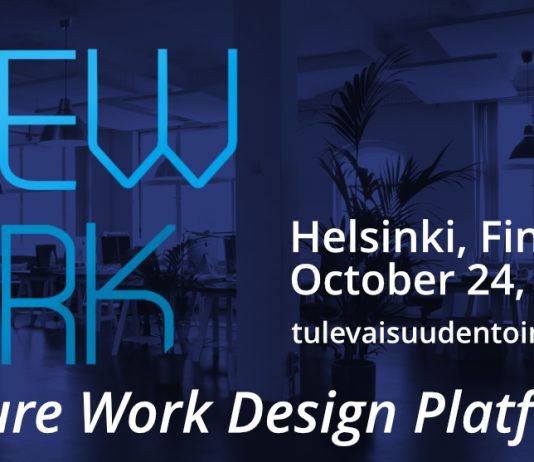
I sketched this blog on paper. I wrote down the goal, wove the thread of the story and jotted down conclusions, with a blue fountain pen, on an A4 paper. Microsoft Word hasn’t replaced the hand written word.
Every now and then, a product that has served the same function for eons, will suddenly quake and tumble, and transform into a new beast. So happened to the concept of words on physical paper, and so is happening to corporate real estate (CRE).
I create content for REWORK events, summits that tackle the topic of future work and workspace. I’ve had a front row seat to the shift in CRE business, and what I’ve observed is a transformation from a commodity business into a service one. In a nutshell, CRE has, for centuries, been space to store the products of work, to store the tools of work and to do the work. Thus, simplified, the demand for space has been tied to a user organization’s number of people, products and tools. Simplified, the supply to the demand has been about accommodating that number of people, products and tools, in a set location.
But the need is fast changing. Number of people is no longer tied to number of people in one location, tools and products are mostly digital and bites don’t need real estate in the traditional sense. User organizations have a diminishing demand for space. Value of CRE is an important factor in our economy, and its devaluation, that would follow a declining usage of CRE, is not an option. We must inspire a demand and make sure our supply fits.
I’ve defined three key factors to the future of offices: What space could now be for users, the psychology of choosing a space and who can provide desirable space.
Space could, and should be, a tool for brand
Competition is tough and getting tougher. The global market place demands thought provoking personality for a company to stand out. Something that was not the requirement, and could even work against a brand, just a few decades ago.
Today is different: everything in a company should be reigned in and pushed to support a recognizable brand. As space has been freed from pure need, we can repurpose it for the use of internal and external brand.
Employees want to give their all to a company whose objectives they believe in, new talent gravitates towards enticing stories and clients want to work with organizations that stir feelings and inspire to innovate. A great way to remind employees of what they’re working for, is to create a working environment, that carries the personality of the organization, and reminds about larger objectives. The story-like quality will speak to new talents as well. New prospects are easy to get to a meeting, when the meeting premises’ visual identity reminds them of the people you are.
Certain elements in the workspace can also communicate your care for your employees. A Big mis-understanding of 21st century office design, is those ping pong tables and popcorn machines you see in big tech offices, like Google and Apple. They are not there to make work ’fun’, like fuddy-duddies tend to assume, but to demonstrate trust in employee’s ability to moderate and manage their own work. They’re a great way to visualize an otherwise hard-to-define concept.
When you don’t have to go to an office, which office do you choose to use?
As work becomes mobile, and teams decentralized, you have to consider which spaces the workforce chooses to work at. When satellite offices aren’t offered by the employer, home offices and nearby cafés are to norm. Their attraction is obvious: comfort, nearby location, services and people you like (neighborhoods and cafés have a well defined target group, after all).
People will choose workspaces after their own personal taste, and spaces that offer them something extra. A Thing to consider is, whether we could make a workspace the physical version of Facebook, a social network. ”Get work done, strengthen your existing relationships and make new contacts while your at it” makes for a great unique value proposition.
Another successful base for operations could be defined with this simple idea: people like products/services that are in line with their preferences but bring in something new and fitting regularly. We like it when our Netflix gives us things we rate high and search for, but we love it when they suggest something we’ve never heard of, that ends up being a perfect fit.
That’s the space people will choose.
The service and experience business is a new beast for CRE providers.
Soon CRE providers can no longer rely on just a good location. They will have to compete in an industry, where services and experiences provided, are the defining competitive edge. It’s a new business the CRE industry has very little idea how to work. Landlords will have to consider, are they up to the task? Do they know how to offer a personalized experience in an office? Do they know how to boost employee productivity with space services? It’s time to figure it out.
Many landlords have opted for one of three: lease to a coworking operator, collaborate with a coworking operator or create an in-house operating business.
The first is the easiest, as it allows you to continue business as usual, but bears risk. As Ilkka Tomperi, RE Investment Director at Varma, commented in his REWORK blog: ”It’s easy and the cash flow is typically seemingly secure and stable. The flipside is a business risk that follows a single tenanted building and leaving part of the upside to the operator who in practice is taking a cheaper per square meter lease on a “wholesale” basis with a long contract and plans to collect a premium rent to lease the space in smaller parcels on short term or flexible contracts to end-users.”
The second, the collaboration angle, is rather safe but demands reformation on your part as well. In a nutshell, it means you get together with a coworking operator and create attraction in collaboration. The model will eat the landlord’s profits ever so slightly and could potentially bring in new business, save the old one at the very least. You won’t be able to continue business as usual, but honestly, it’s time to change anyway.
The third option could be to go in-house all the way. That means completely transforming your old business models, hiring people proficient in CRE services, training your old staff to new business and rebuilding the product you offer. The full profit and gain will be yours, but the journey will be long and hard; there’s no guarantee it’ll work. But if it does, you’ll be one step closer to long lasting success, and you’ll know how to change, when the next disruption comes along.
In conclusion
There’s light at the end of the tunnel. Sure, we’ll have to try and fail, and try again, all of us. Both the user organizations and the CRE industry, will have to redefine their space. But when we do find our way out of the transformation phase, and into the new norm for corporate real estate, we’ll have space that, not only stores our people and work, but adds value.
Remember, just like the print didn’t die, neither will space – it’ll just look a little different and offer experiences in stead of necessities.
We’re discussing the future of workspace at REWORK Summit in Helsinki on October 24th. We’re proud to have seats2meet.com‘s very own Lenneke van Rossum on stage, amounts other industry leaders like Antony Slumbers, CEO at Estates Today and the #1 CRE industry influencer, and Ilkka Tomperi, RE Investment Director at Varma. Read more at: tulevaisuudentoimisto.fi
The writer is Isla Vainio, Producer at HUB13 and the Head Content Creator for their REWORK events.
The post Redefining Space appeared first on Seats2meet.
August 30, 2018
AGCS is looking for a Digital Media Designer

Hello, we are AGCS an advertising production agency based in Amsterdam. We specialise in designing and developing HTML5 advertising units for creative agencies, advertisers and premium publishers.
AGCS is looking for someone with the skill and ambition to produce great work.
We are looking for an excellent designer that has experience in digital and/or advertising design. It is also a plus if you have front end coding experience.
The person:
– Amazing designer 
AGCS is looking for a digital project manager
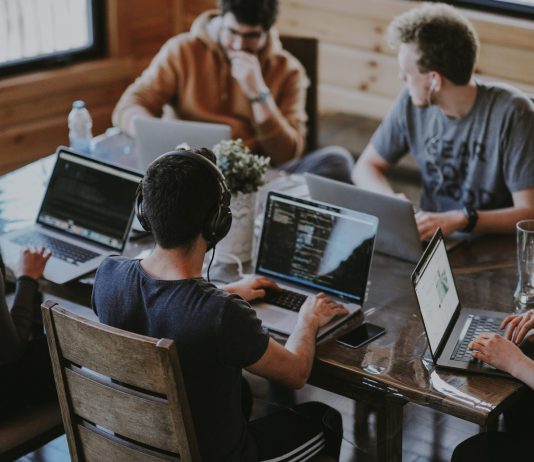
Hello, we are AGCS an advertising production agency based in Amsterdam. We specialise in designing and developing HTML5 banners for creative agencies, premium publishers and advertisers. We are a small team looking for a brilliant Project Manager to help manage digital advertising campaigns. Our office is centrally located in Amsterdam and we work on great campaigns on both a technical and creative basis.
Role & Responsibilities
You’ll manage the production of display ads and other advertising content AGCS produces for brands such as Yamaha, Universal Pictures, Volvo and Samsonite.
Collaborating with Creative and Media Agencies on projects.
Undertaking planning tasks, and organise all the small details of a digital advertising campaign.
Helping to scope and quote the work, establishing what gets done and when and to make sure projects are profitable and doable.
Communicating with clients on a daily basis by Skype, phone and email. Your written English should be strong.
Working on small projects with fast turnarounds and also on longer term projects that require regular updates and research tasks.
Working closely with the sales team to support clients who require further information on pricing, specifications and processes.
Helping with organising marketing material and updating advertising specifications.
Get out and about and meet clients face to face with the sales manager to help set up projects. You should be confident in meeting new people.
What are we looking for?
– Language – Fluent in English (German or Dutch is also a bonus).
– Excellent at communication. You will need to communicate with a range of people on a daily basis.
– VERY organised, able to work under pressure without losing your cool.
– Excellent attention to detail. You should have an eye for detail (and design) as you will be checking the work of the developers and designers before creative is sent to the client.
– Some experience working in an agency or marketing field.
– Interested in working in the media industry, and specifically interested in digital advertising.
– You should have a natural calling to design and advertising.
Skills needed:
– Presentation editing and creation (mostly in google)
– Photoshop skills are desired
– Good with numbers and know how to set up spreadsheets
– Brilliant at organising yourself and other people!
What do we offer?
– Good salary based on experience
– A relaxed working environment and challenging when we are busy
– Go karting, ice-skating, darts, beer and coffee
– Half day on your birthday
– Our offices are in a beautiful old building, 5 minutes walk from Amsterdam Central Station!
How to Apply?
Please send us your CV, and short email explaining how you why you are perfect for the job, we want to see 2 short examples from your work experience regarding project management or client communication.
Please also send us a list of your top 5 favourite bands!
The post AGCS is looking for a digital project manager appeared first on Seats2meet.
Serendipity; five tips for more unexpected, relevant encounters ✨

Read the original article in Dutch
We have built all of Seats2meet.com around it, more than 80% of the visitors of a S2M location experience it, we wrote a book about it, and even built an AI driven tool for it, and it is what makes us move because we believe that it makes us a better person; we are talking about Serendipity , an unexpected and relevant meeting.
, an unexpected and relevant meeting.
But how do you make sure you are open to those unexpected events? Here are five tips to help you.
Tip 1: Show yourself

August 29, 2018
Let’s fiks it! Een dag voor wereldverbeteraars
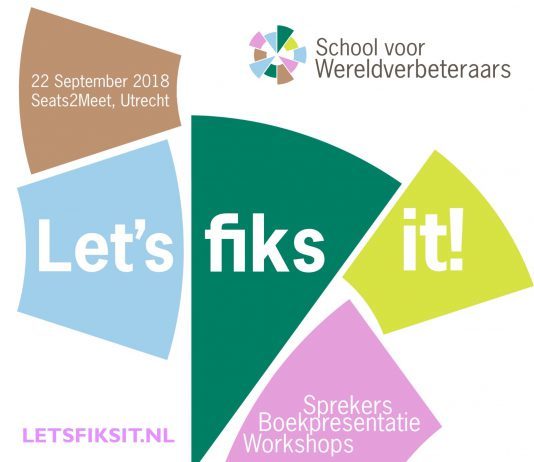
Let’s fiks it – een dag voor wereldverbeteraars.
Natuurlijk zit je vol goede ideeën om iets moois voor elkaar te krijgen en wie weet lukt er al van alles. Maar misschien wil je zelfs wel dat jou nog meer gaat lukken.
Dat je nog meer positieve impact gaat maken. Wees dan welkom op Let’s fiks it! – een dag voor wereldverbeteraars.
Op Let’s fiks it! beleef je inspirerende mensen die ieder op hun eigen manier de wereld aan het verbeteren zijn en hun verhalen, tips en trucs met je delen.
Volg workshops waardoor jouw droom sneller kan lukken: hoe organiseer je een event, hoe schrijf je een boek? Hoe verbind je nog meer mensen aan jouw doel? Hoe kan je tech nog beter inzetten en nog veel meer!
Laat je inspireren door de sprekers
Krijg een logo of foto van waarmakers die er zijn om je op weg te helpen
Of ga lekker loungen en ontmoet andere leuke bezoekers van deze dag.
We maken bekend wie wereldverbeteraar van het jaar wordt! Je kunt nu al mensen nomineren
Heerlijke lunch & borrel
Het Handboek voor Wereldverbeteraars wordt op deze dag gelanceerd. Laat je exemplaar signeren door auteur Juul Martin als je wilt.
Tof als je wilt komen! Zie het programma met alle bijzondere mensen die jou komen helpen. Iedereen is er die dag om kennis met jou te delen, zodat jouw droom ook sneller lukt.
Let’s fiks it!
zaterdag 22 september van 10-16 uur +borrel
Seats2Meet, Utrecht
entree € 69,-
(als je het Handboek voor Wereldverbeteraars er meteen bij bestelt krijg je 10,- korting op de entree)
>>> TICKETS KOOP JE HIER <<<
een initiatief van School voor Wereldverbeteraars
Programma Let’s fiks it 22 september
Sprekers
Wout van Wengerden de kwetsbare held: Waarom je wel iets moet doen als je het nog niet durft.
Juul Martin, auteur Handboek voor Wereldverbeteraars. Interview hem mee in college tour setting.
Workshops
Ga hosselen – Geld verdienen als Levenskunst Jeanine Schreurs
Permanent Future Lab Nick van Breda
Zo schrijf je een Boek Geerhard Bolte
Besluiten nemen met 100% Draagvlak Gerrit Kapteijns & Hanneke Goossens
Future U – Handvatten voor de Toekomst Sjoerd Gerritsen
Picture It – Van Droom naar Event Anna van der Meulen
De Kracht van anders kijken Hans van der Mast
Dragon dreaming, ontdek deze werkwijze om je droom waar te maken Annette Dölle
Crowdsourcing & funding. Hoe verzamel je hulp, netwerk en spullen? Heroes and Friends
Durftevragen. Je droom waarmaken begint met het stellen van de juiste vraag Mieke Miltenburg
Win tijd door slimmer te werken Mike Verbruggen
Waar wacht je nog op? Wart Attends
Social media anno 2018 – Wat werkt wel en wat vooral niet? Karin Mollemans & friends
Just ask Lounge
3D Visual notes door Jozua
Advies voor jouw sociale project, Safka Overweel Stichting DOEN
Waarmaakstraat voor een logo, website of profielfoto
Virtual Reality by Heroes and Friends
Mini boekwinkel
The post Let’s fiks it! Een dag voor wereldverbeteraars appeared first on Seats2meet.
August 27, 2018
Serendipity; 5 tips voor meer onverwachte, relevante ontmoetingen ✨

We hebben heel Seats2meet.com erop gebouwd, meer dan 80% van de bezoekers van een Seats2meet.com locatie ervaart het, we schreven er een boek over en bouwen er zelfs een tool voor, en het is het geen wat ons laat bewegen omdat we geloven dat het ons een beter mens maakt; Serendipity , een overwachte maar relevante ontmoeting.
, een overwachte maar relevante ontmoeting.
Maar hoe zorg je nu voor een relevante ontmoeting en sta je open voor het onverwachtse?
We delen 5 tips.
Tip 1: Laat jezelf zien

Thriving nomads celebrating freedom

 From August 14 – 19 around 500 digital nomads coming from many different nationalities gathered in the beautiful mountains around Solsona in the Spanish Pyrenees to celebrate the Freedom X Fest. It was the first festival of its kind for the location independent movement, and it surely was great to be part of it as KantoorKaravaan!
From August 14 – 19 around 500 digital nomads coming from many different nationalities gathered in the beautiful mountains around Solsona in the Spanish Pyrenees to celebrate the Freedom X Fest. It was the first festival of its kind for the location independent movement, and it surely was great to be part of it as KantoorKaravaan!
First of all it’s clear that this movement is quite unstoppable. The evolvement of digital technologies make working from anywhere more and more accessible. This is reflected in the growing number of co-working and co-living spaces. All over Europe they’re sprouting up like mushrooms, kind of surprisingly especially in eastern Europe.
More interesting than just co-working spaces are the ones that are located in rural areas. That’s the space KantoorKaravaan – we call it the smallest co-working space in the world – feels most attracted to obviously.
So we were particularly interested in meeting the people who’ve been working on these, like Coconat in Germany, Nectar in the Pyrenees, Pandora Hub in Spain, and – slightly different – Seats4Silence in The Netherlands. Awesome to see how some of these are thriving, which means more and more city people feel the need to fill the natural void in their lives.
A potential risk of the digital nomad lifestyle – especially if you go to remote areas – is that you just travel from place to place, spending time in comfortable places, meeting like minded people, but never really getting out of your little bubble. That means there’s a minimal connection with the local environment and people. This can be troubling because eventually you’ll miss a sense of place, and your community will almost never include people that are bearing the responsibility for the village or region you’re in.
That’s why Pandora Hub, who are reviving (partly) abandoned villages in the countryside by establishing co-living / -working spaces, try to involve all the stakeholders of the village when they’ve set their eyes on a specific location. By making plans and decisions together, everyone is inspired to find the most feasible solutions for both inhabitants and newcomers. This eventually fills the gap between these two groups and newcomers take much more responsibility for their being there.
In general the possibilities for rural co-working spaces are endless, since both the growth of the digital nomad group and the end of the exodus from people to cities are not in sight.
Once more and more people start to see the tremendous opportunities of (part-time) living in the countryside, perhaps that last trend will finally stop. Living the digital nomad lifestyle can then, therefore, help bridging the gap between humans and nature.
The post Thriving nomads celebrating freedom appeared first on Seats2meet.
August 22, 2018
5 redenen om eens naar nieuwbouw te kijken als startende ondernemer
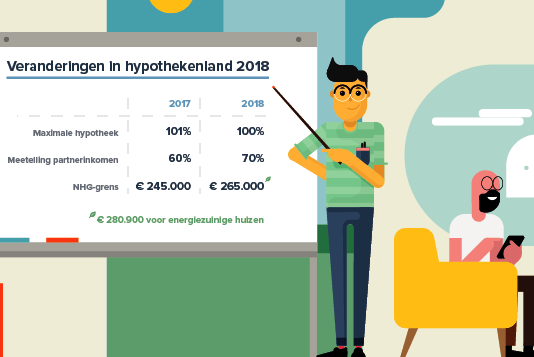
Misschien heb je er nooit bij stilgestaan dat het ook als startende ondernemer mogelijk is om een huis te kopen. Toch kan het. Gelukkig maar: want er zijn in Nederland bijna 1,5 miljoen zelfstandigen. Ga je voor een huis kijken? Er zijn 5 redenen waarom een nieuwbouwhuis voordelig is voor starters.
Voor groene huizen mag je meer geld lenen
Nieuwbouwhuizen worden altijd energiezuinig gebouwd, de overheid stelt hier namelijk strenge eisen aan. Daarnaast wil de overheid aanmoedigen dat er groene huizen worden gekocht. Voor de hypotheek mag je daarom 9.000 euro extra lenen bovenop wat je normaalgesproken maximaal mag lenen. Voorwaarde is wel dat je (gezamenlijke) inkomen minimaal 33.500 euro bruto is.
voor groen mag je meer lenen en het scheelt je in je energierekening
Groen betekent een lagere of geen energierekening
Energiezuinig betekent natuurlijk ook dat je bespaart op de rekeningen iedere maand. Ieder jaar worden nieuwbouwwoningen energiezuiniger. Soms zijn ze zelfs energieneutraal, als er bijvoorbeeld zonnepanelen op het dak liggen. Dit betekent dat de woning zichzelf compleet van energie voorziet. Je betaalt dan geen extra kosten voor de energie.
Voor de hypotheek zelf heb je minder eigen geld nodig
Als je een hypotheek afsluit dan heb je eigen geld nodig. Je mag namelijk niet meer lenen dan de woningwaarde terwijl je bijvoorbeeld ook kosten hebt voor de notaris en het hypotheekadvies. Als je een bestaand huis koopt dan betaal je een overdrachtsbelasting. Deze belasting bedraagt 2% van de koopprijs. Bij nieuwbouw ben je de eerste eigenaar dus hoef je deze belasting niet te betalen. Dit scheelt je zo een paar duizend euro.
Gemiddeld heb je voor de hypotheek bij nieuwbouw een paar duizend euro minder eigen geld nodig
Je hebt geen 2 hypotheken tijdens de bouw van het huis
Als je al een huis hebt met een hypotheek en je koopt een nieuwbouwhuis dan moet je aan de bank waar je de Hypotheek Nieuwbouw aanvraagt aan kunnen tonen dat je de dubbele lasten aankan. Anders willen ze je minder geld lenen. Als starter heb je dit probleem niet, want huur wordt niet meegerekend in het bepalen van hoeveel je mag lenen voor de hypotheek.
Je betaalt in het begin minder rente
Voor een hypotheek betaal je ook rente aan je bank. Anders zou het niet interessant zijn voor hun om je het grote bedrag te lenen. Bij een nieuwbouwhuis betaal je in het begin van de looptijd van je hypotheek relatief weinig rente. Dat werkt zo. Als je een nieuwbouwhuis koopt dan wordt het geld van de hypotheek gestort op een speciale rekening: het bouwdepot. Naarmate de bouw vordert wordt er steeds wat geld uit het bouwdepot gehaald. In het begin zit er dus nog veel geld in dit spaarpotje. Over dit geld ontvang je ook rente, de depotrente. Je betaal tegelijkertijd ook al hypotheekrente aan de bank. Maar per saldo ben je in het begin van de hypotheek minder aan rente kwijt.
The post 5 redenen om eens naar nieuwbouw te kijken als startende ondernemer appeared first on Seats2meet.

